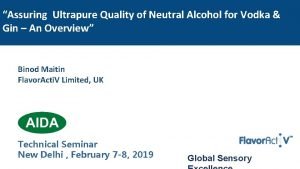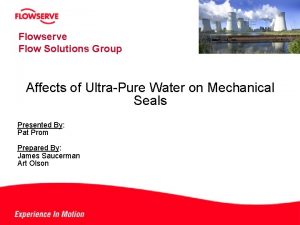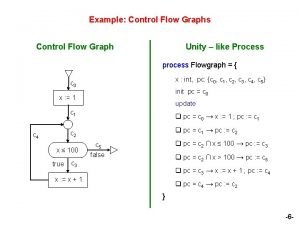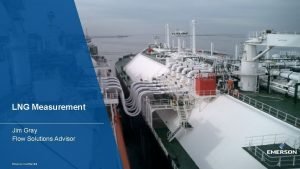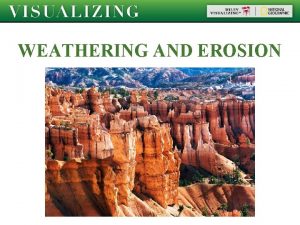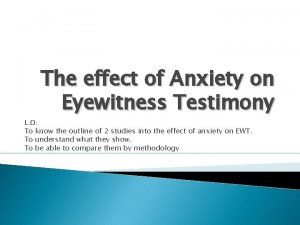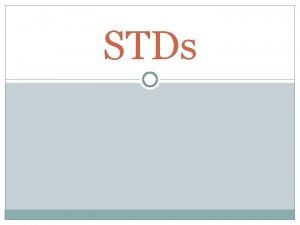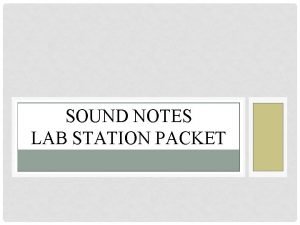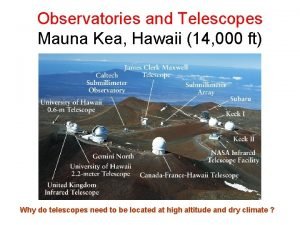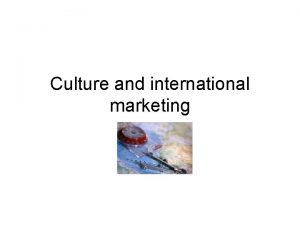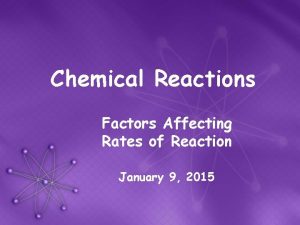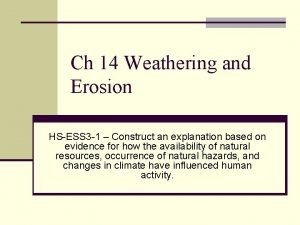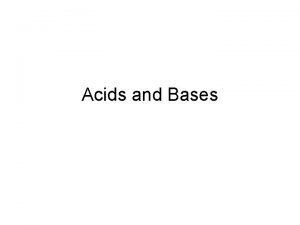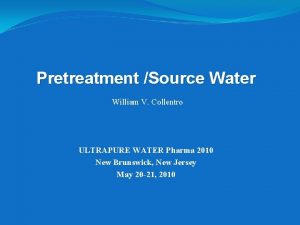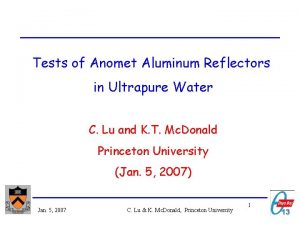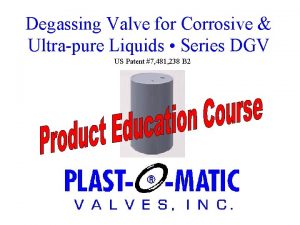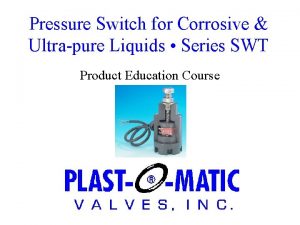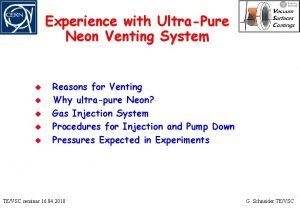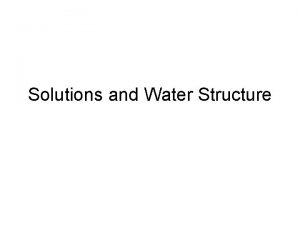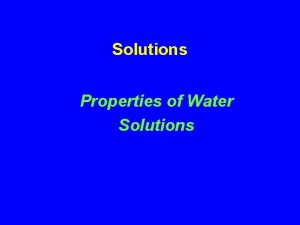Flowserve Flow Solutions Group Affects of UltraPure Water

























- Slides: 25

Flowserve Flow Solutions Group Affects of Ultra-Pure Water on Mechanical Seals Presented By: Pat Prom Prepared By: James Saucerman Art Olson

Summary: • Background Information • Current Test Programs: -Reactor Recirculation Pumps -Reactor Feedwater Pumps The Solution

Background

BACKGROUND INFORMATION The Phenomena – Field Observations • Under certain operating conditions and environment a specific kind of damage occurs to both silicon carbide and tungsten carbide. • Certain areas on a silicon carbide seal face experience pitting/chipping and material loss. In tungsten carbide the result also exhibits pitting and flow channels.

BACKGROUND INFORMATION (Field Results – Spectrum Analysis of Si. C)

BACKGROUND INFORMATION (Field Results –Cross-Section Tungsten Carbide) Nickel binder removed leaving voids in material Original condition of tungsten carbide with nickel binder present

BACKGROUND INFORMATION Where do we encounter this problem? 1. Nuclear primary reactor recirculation pumps § Increasing number of incidents in BWR plants worldwide 2. Reactor Feed Water Pumps 3. Fossil fueled plants worldwide using COT (Combined Oxygen Treatment) § More conventional plants going to ultra-pure water are increasing the number of seals experiencing this problem

BACKGROUND INFORMATION What has been identified as a contributing factor? • Purity of process fluid (Ultra-pure water) • Friction • Piezoelectric properties of silicon carbide or tungsten carbide • High circumferential speeds

BACKGROUND INFORMATION How these factors interact…. Theoretical Explanation • Seal face friction generates heat and charged particles on seal surfaces. • In the presence of low conductivity water the electrical charges can not easily dissipate and charge builds on Si. C or Wc seal face. • When sufficient charge accumulates the stored energy jumps or travels to a conducting surface; resulting in the damage to the outer diameter of the rotating face. • Discharging results in vaporized regions at the sub-micron level which grow over time (Si. C) or loss of binder in Wc

BACKGROUND INFORMATION Common denominator in all these applications: Extremely low conductivity of the water Electrical conductivity of water types: Ultra pure water: 0. 055 µS/cm Distilled water: 0. 3 – 5. 0 µS/cm Potable water: 30 – 1500 µS/cm Sea water: 50000 µS/cm

BACKGROUND INFORMATION Current Test Programs

CURRENT TEST PROGRAM: (Nuclear) Operating Conditions: • Seal: 9” balance diameter • Material Selections: • Tungsten Carbide vs. Carbon • Si. C w/laser treatment vs. Carbon • Test Fluid: • Distilled water (20 – 65 µS/cm) • Ultra-pure water (< 0. 15 µS/cm) • Fluid Temperature: 75 - 160° F • Speed: 430 – 1780 rpm • Test Duration: 200 hours / test

CURRENT TEST PROGRAM: (Nuclear) Test Plan: • 3 Rapid Pressure Transient Cycles: 15 – 1025 psig (2 hours) • 2 Rapid Temperature Transients: 60 – 160° F (1 hour) • Various operating speeds: • Slow Roll Speed: 430 rpm (1 st 100 hours of test) • Full Speed 1780 rpm (2 nd 100 hours of test)

CURRENT TEST PROGRAM: (Nuclear) Results (Tungsten Carbide vs. Carbon): Electro-corrosion Process fluid: 20 – 65 µS/cm 0. 065 – 0. 12 µS/cm

CURRENT TEST PROGRAM: (Nuclear) Test Results: 200 hours Process fluid: <0. 15 µS/cm Field Inspection

CURRENT TEST PROGRAM: (Reactor Feedwater Pump) Operating Conditions: • Test Fluid: • Distilled water (20 – 30 µS/cm) • Ultra-pure water (< 0. 15 µS/cm) • Fluid Temperature: 125° F • Speed: 5500 rpm • Test Duration: 168 hours • Flow Rate: 5 gpm

CURRENT TEST PROGRAM: (Reactor Feedwater) AISI 316 Sleeves WC Si. C

The Solution

THE SOLUTION: Precision Face Topography w/Laser Treatment Seal dam: Low amplitude waves: Improves hydrodynamic stability and increases load support Maintains low leakage Full Laser Treatment: Changes material and electrical properties Self-Cleaning Design: Expels suspended solids in process fluid

THE SOLUTION: Precision Face Topography w/Laser Treatment Standard lapped Si. C face Lasered processed Si. C face

TEST RESULTS: (Fossil Fuel) Results (Silicon Carbide w/Laser Treatment vs. Carbon): Original Design after 168 hours Proposed Design after 430 hours

TEST RESULTS: (Nuclear) Results (Silicon Carbide w/Laser Treatment vs. Carbon): Process fluid: 20 – 73 µS/cm 0. 075 – 0. 14 µS/cm

CONCLUSIONS: Precision Face Topography w/Laser Treatment • Electro-corrosion (EC) does not occur above 20 µS/cm process fluid; field experience shows above 15 µS/cm • Field experience and tests show that the purer the water the more aggressive the damage becomes • The use of hydro-dynamic features + post laser processing of surface eliminates EC in ultra-pure water applications • Combination of hard-soft seal faces are forgiving for wider range of operating conditions and allows incidental contact at smaller fluid film thickness (lower leakage)

CONCLUSIONS: Precision Face Topography w/Laser Treatment • Matching electrical conductivity of sealing surface pair will minimize the build-up of electrical charge, minimizing the potential between the two surfaces • Precision Face Topography w/laser treatment provides cooler running face temperatures which minimizes likelihood of electro-corrosion

FUTURE WORK: Precision Face Topography w/Laser Treatment • Perform long term testing on steady state nominal operation tests for both reactor recirculation and Reactor Feed Water pump seals
 Thinking language and intelligence
Thinking language and intelligence Ultrapure spirits
Ultrapure spirits Water and water and water water
Water and water and water water Flowserve store
Flowserve store Flowserve distributors
Flowserve distributors Flowserve pumps distributors
Flowserve pumps distributors Storeportal future group
Storeportal future group Control flow graph example
Control flow graph example Emerson flow solutions
Emerson flow solutions What affects rate of weathering
What affects rate of weathering Waves means
Waves means The new deal affects many groups
The new deal affects many groups Igor areh
Igor areh A bacterial std that usually affects mucous membranes
A bacterial std that usually affects mucous membranes What factor affects the speed of sound wave?
What factor affects the speed of sound wave? What affects perception
What affects perception Chromatic aberration affects reflector telescopes
Chromatic aberration affects reflector telescopes How sport affects health
How sport affects health Factors affecting projectile motion
Factors affecting projectile motion Which poetry element affects the poem's sound
Which poetry element affects the poem's sound How culture affects decision making
How culture affects decision making What is catalyst and how it affects reaction rate
What is catalyst and how it affects reaction rate How technology affects managerial communication
How technology affects managerial communication Chapter 1 lesson 2 what affects your health answer key
Chapter 1 lesson 2 what affects your health answer key Hsess
Hsess What affects basicity
What affects basicity

